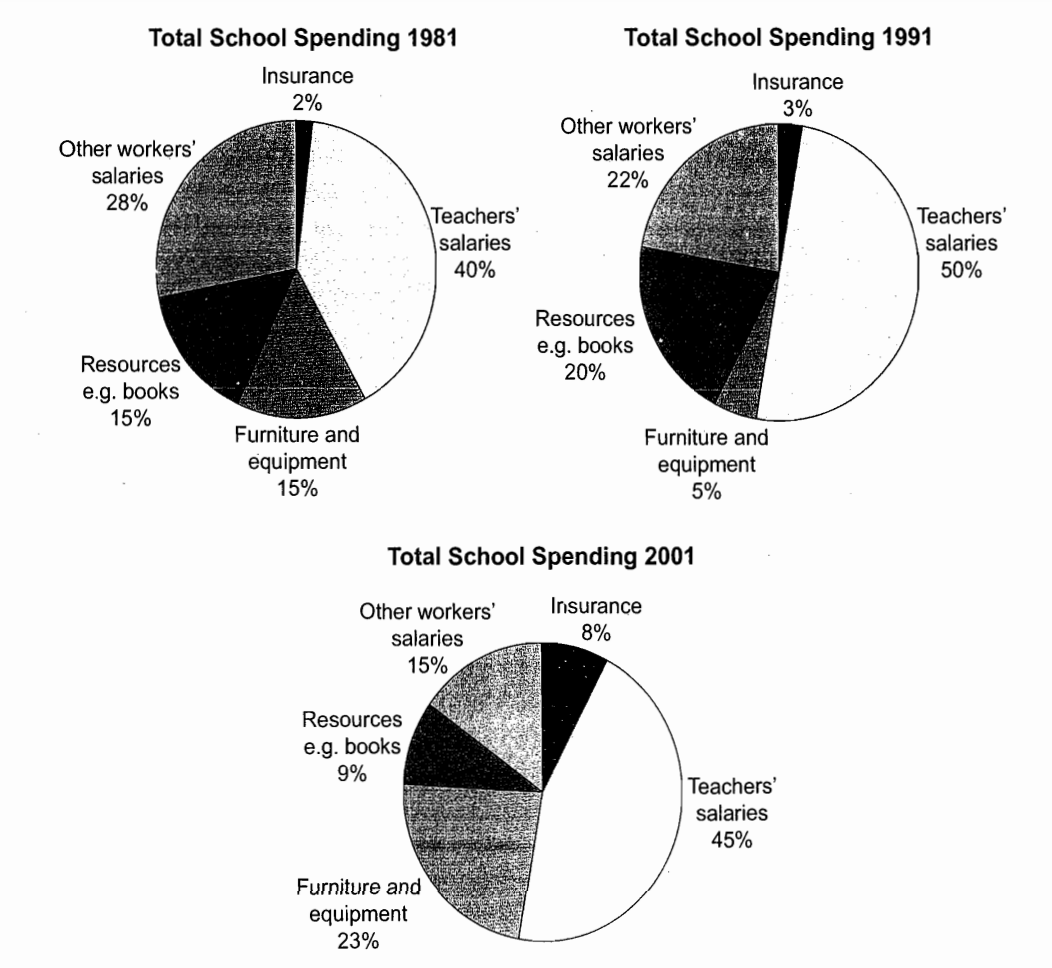Writing Task 1
You should spend about 20 minutes on this task.
The three pie charts below show the changes in annual spending by a particular UK school in 1981, 1991 and 2001.
Summarise the information by selecting and reporting the main features, and make comparisons where relevant.
Write at least 150 words.

Writing Task 2
You should spend about 40 minutes on this task.
Write about the following topic:
Nowadays the way many people interact with each other has changed because of technology.
In what ways has technology affected the types of relationships people make?
Has this become a positive or negative development?
Give reasons for your answer and include any relevant examples from your own knowledge or experience.
Write at least 250 words.
Cambridge IELTS 8 Academic Writing Test 2 Task 1 Model Answer (181 words)
The charts show how much a UK school spent on different running costs in three separate years 1981, 1991 and 2001.
In all three years, the greatest expenditure was on staff salaries. But while other workers’ salaries saw a fall from 28% in 1981 to only 15% of spending in 2001, teachers’ pay remained the biggest cost, reaching 50% of total spending in 1991 and ending at 45% in 2001.
Expenditure on resources such as books had increased to 20% by 1991 before decreasing to only 9% by the end of the period. In contrast, the cost of furniture and equipment saw an opposite trend. This cost decreased to only 5% of total expenditure in 1991 but rose dramatically in 2001 when it represented 23% of the school budget. Similarly, the cost of insurance saw a rising trend, growing from only 2% to 8% by 2001.
Overall, teachers’ salaries constituted the largest cost to the school, and while spending increased dramatically for equipment and insurance, there were corresponding drops in expenditure on things such as books and on other workers salaries.
Cambridge IELTS 8 Academic Writing Test 2 Task 1 Model Answer (269 words)
Technology has dramatically altered how people interact and form relationships. Digital communication, such as social media and messaging apps, now enables people to maintain connections across distances effortlessly. This is beneficial for keeping in touch with family and friends worldwide, fostering relationships that might otherwise diminish due to physical separation.
Additionally, technology facilitates the creation of broader social networks. Online communities allow individuals to connect with others based on shared interests rather than just proximity. This can lead to richer relationships with like-minded people that they might not meet in their local environments.
In romantic contexts, online dating platforms like Tinder and Bumble expand opportunities for meeting potential partners. These platforms help people find compatible matches outside their usual social circles, potentially leading to more fulfilling relationships.
However, these changes come with drawbacks. Digital interactions can lead to superficial relationships, where online connections are numerous but lack depth. Social media often prioritizes quantity over quality, resulting in many “friends” but few meaningful interactions.
Moreover, the convenience of online communication can reduce face-to-face interactions, essential for developing empathy and deeper understanding. This can contribute to feelings of isolation despite having a large digital social network. Additionally, younger generations might struggle with developing interpersonal skills, as they rely more on online communication and less on in-person interactions.
Privacy concerns also arise with technology. Oversharing personal information online can lead to breaches of trust and misunderstandings that harm relationships.
In conclusion, while technology offers valuable tools for connecting people, it also poses challenges to the quality of those relationships. Balancing digital and real-world interactions is crucial to maintaining meaningful connections.
Leave a Reply